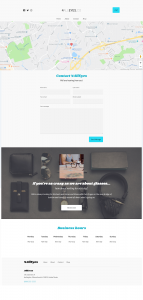
What is your current employee retention strategy? If you cannot immediately answer the question, or at least begin envisioning your current organizational approach to employee development, then we’ve already identified a core reason why you are continually hiring customer service representatives.
Hiring exceptional customer service representatives results in (you guessed it) exceptional customer service. Retaining your representatives, however, nets the greatest asset of all – happy, loyal customers who recognize your level of service and an enjoyable work environment for your employees. If you are continually recruiting, hiring, training, and losing your public facing employees, how can you guarantee your customers the same quality of service with each interaction and instill pride in your representatives?
There is no magic bandage to resolving representative retention, but there are a variety of tactics you can implement which will help heal your hiring wounds and strengthen your existing recruitment practices.
Identifying The Best Candidates
Don’t just hire a body, hire a mind. The greatest disservice you can do for your business is to hire someone as a customer service representative without an overarching strategy for initial applicant screening. If you are not focusing on candidates who will align with your company goals and approach to customer service up front, then the odds of misalignment between company and employee are much greater. If you hire someone by just “going through the motions”, don’t be surprised when you see the same quality in their work and level of engagement with your company.
Taking the time to identify your “best fit” candidates will ensure you a much higher retention rate in the long run. Notice the term is “best fit” and not “perfect fit.” Think of all the times you’ve hired someone who had every skill or experience you desired, only to find out that they were a nightmare to manage or didn’t mesh well with your existing team members.
Customer service representatives will arrive at your door with a wide range of skills and varying degrees of experience in your related field, but don’t let a lack (or absence) of experience rule them out. Experience can be gained, but the natural ability to perform is much harder to replicate. When screening your customer service candidates, try and provide opportunities for them to showcase the following traits, or the “CSR APC’s” as I like to call them:
Adaptability
Representatives need to address customers quickly, accurately, and consistently while simultaneously using electronic database systems or programs, many of them proprietary and unique to your business. The faster a representative can learn your business and service values, the faster their initial turn around in productivity. The best return, however, is the long term gain of a subject matter expert who can facilitate your “tribal knowledge” (or internal terminology) to additional hires and effectively communicate with other areas of your business.
Personality
Your best representatives will be ambiverts, possessing the positive aspects of both an introvert and extrovert. This is because ambiverts understand the value of genuine communication and the variety of methods necessary to achieve it. They work well with customers, but equally as important, they work well with co-workers too. They routinely demonstrate a positive attitude in the workplace, keep momentum on projects going, and prevent the spread of “toxic” behavior.
Creativity
Representatives need to come up with on-the-spot solutions to problems on a daily basis with a limited set of tools and/or within certain regulations. The best representatives will develop unique solutions on their own and vocalize their findings to grow your systems, enrich your customer interactions, and add value to their own employment status.
Onboarding New Hires
Imagine when you visit a new restaurant of hotel for the first time. Regardless of what happens, after you leave you formalize a decision on your experience which in turn influences your future behavior. It could either be “Wow that place was amazing! I can’t wait to tell so-and-so!” or “You couldn’t pay me to go back to that miserable slop-show they call an establishment.” Joining a new company is the exact same experience. You just spent weeks, maybe even months finding the “best fit” candidate, so why should your onboarding process be any less streamlined and set a bad example of things to come?
The goal of bringing on a new customer service representative is to get them situated in their new role as soon as possible, but it’s equally important to illustrate your values in action. Having an employer tell you “this is a great place to work!” is much different from seeing it first-hand. If you’re still doing the Ebenezer Scrooge method of onboarding your customer service representatives (slaving away over a pile of documents, cursing the world and all its joys while shooing Bob Cratchit back to his cubicle), try implementing a few of the following concepts:
Pre-arrival Onboarding
Don’t treat day one on the job like the first day of school where the general expectation is you’re not going to get much done. Try having your onboarding documents completed AND reviewed before the first day; conduct a secondary meeting or half day to go over specific documents prior to the first “true” day on the job. Having all of the required employment elements out of the way will allow you to focus on your new hire as an addition to the team which in turn provides a more engaging experience with your company as a whole.
Meet The Company
It’s often easy to introduce your customer service representatives to only your customer service department and their immediate management team. Try having your new hires meet with other departments and/or members of the senior staff (some of whom may have started as representatives too). By having a broader understanding of how their interactions with customers influence the lives of their co-workers, they will see greater value in their daily tasks and their position as a whole.
Establish Skill Goals
There should be clearly established goals in place for the first 30, 60, and 90 days of being a representative with your company, and not strictly in standard metrics like the amount of customer interactions handled. Instead, you should be able to gauge how a representative is handling issues/locating information and using your systems to assure they are practicing your company’s customer service strategy. As we all know from our own horrific customer service experiences, every problem cannot be solved in five minutes.
Managing For Success
The old adage of “a happy worker is a productive worker” is very much alive and well. Any review of top performing companies will showcase customer service environments conducive not only to their customers, but to their employees as well. Aside from outright monetary compensation, there are a variety of factors which will help you keep the excellent customer service representatives you already have:
Personalized Incentives
It’s common to use incentives for customer service and/or sales positions to keep morale up (especially during hard times), but what if your incentives aren’t of any value? If possible, meet with your team individually and determine what they feel would be something truly worth receiving. Remember that the greatest behavior modifiers are those of value, and value is subjective; a gift card may be effective for one employee, while another can see a half day off as their “holy grail.”
Career Pathing
The final step before complete disengagement of a customer service representative occurs when they realize they have no future with the company, but the seeds of discontent were planted much earlier. It’s easy to discuss career pathing up-front in the interview/hiring process, but how often are you re-engaging in this conversation for the length of their employment? Career pathing conversation should occur more frequently than just an annual review, as this will help monitor skill development and more clearly define future advancement opportunities for your employee where their strengths can be maximized.
Build A Team
Each new customer service representative should complement your existing staff. The more “in tune” you are with your team (and new additions) provides greater consistency in the application of your customer service strategy, but also instills a sense of belonging to the business. If a representative starts to feel out of place or has no association with their co-workers, the next logical step is to question the value of their role. We often refer to customer service representatives as the “front line of the business,” so being part of a cohesive unit is vital to the health of your “soldiers” and the quality of service they provide customers (it also beats having to dig a foxhole alone).
That’s Great And All, But What Now?
Customer service representatives personify your company values and are the lifelines to your customers, so investing in them will always be money well spent. Without an overarching strategy for building, developing, and maintaining a healthy customer service program however, you’re representative retention and customer satisfaction will continue to suffer (as well as your bottom line).
As every business and customer service program is different, you may not be able to apply some of the suggestions I’ve outlined. You can, however, begin reviewing your current customer service strategy to identify areas of improvement and work to minimize the loss of your existing all-stars and future representatives.
An easy step you can take down the path of updating your current hiring process is to incorporate an applicant tracking system into your employee retention strategy. Utilizing an ATS will increase the efficiency of your screening, improve the quality of your hires, streamline your onboarding process, and best of all, provide you more time to spend managing your team. By demonstrating your values though strategized hiring you will net the “best fit” customer service representatives who will not only continue to add value to your business, but also enjoy being part of your team. You’re going to hire, so hire happy.
For more information on how to find the best candidates, check out the ebook: The Online Recruiting Guide: 11 Steps to Attract More Applicants.
Business & Finance Articles on Business 2 Community
(389)
Report Post







